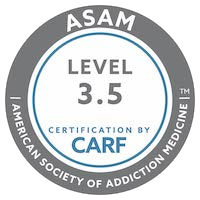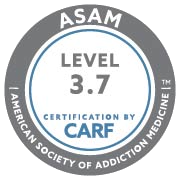Hathaway Recovery is eager to help as many people as possible during their alcohol and drug recovery path and create a solid sobriety foundation for their future and maintain their skills to recovery from alcohol and drug dependency. Hathaway is doing whatever it takes for all clients to receive proper alcohol and drug recovery treatment. From the beginning of admission, patients are provided with excellent detox, residential, and exit planning. From the initial days of treatment, the patient is assisted by Hathaway’s staff to work toward measured, achievable, and time-bound goals. The clinical staff works with the patient to identify common goals tailored to the patient’s needs on an individual basis. Every treatment plan is shared during staff meetings to gather staff insight and information that may assist all clinicians and all staff in supporting the patient to meet their goals.

Call Hathaway Recovery Center today to learn more details about your possibilities for court ordered drug rehabilitation program.
We respect your privacy.
Hathaway Detox Treatment Planning
Hathaway Clinicians assist a patient to set primary goals of detox which may include successfully remaining sober to complete detox. The first step toward that goal may be to meet with the physician and receive a physical examination. Another step may be taking medications as prescribed and participating in random or scheduled drug testing. Any issues or barriers a patient may experience during detox may be identified and agreed to, with the patient’s input; the counselor and patient will work in tandem to determine what the patient will do should those problems arise. Detox treatment planning is conducted within 48 hours of admission.
Another detox goal might include identifying that the substance use has been problematic and what the consequences will be should the patient continue to use. The patient and counselor identify small steps toward the larger goals and determine deadlines. Should it be appropriate, the patient’s goals will lead toward continued engagement in the proper level of treatment after detoxification.
Hathaway’s goal is to provide the highest quality detox and treatment in a setting that is safe and comfortable so that symptoms occurring in the brain and body after substance abuse can be addressed in a dignified manner.
Hathaway Residential Treatment Planning

During initial assessments, particularly during a biopsychosocial assessment and individual sessions, areas of the patient’s life affected by substance use are identified. These identified areas lay the foundation for the next level of care and engagement in treatment. The areas affected break down by ASAM’s six dimensions and are the foundation of a healthy treatment plan.
As the counselor and patient explore the areas of life that are affected by the disease, the severity of each dimension is also identified. This allows the patient and clinician to work out what goals to set first, second, and so forth and then break each one down into smaller, timebound steps. For example, should the patient have mental health issues, those would be one of the first goals to address so that the patient is stabilized, can participate fully, and experience an expeditious and then, long-term improved quality of life. Steps might include being seen by a psychiatrist, obtaining prescribed medications and taking those medications as prescribed, engaging in therapy with a qualified therapist, and participating in ongoing individual sessions and assessments.
Updates to the plan are made and the patient is always acknowledged for their progress or, supported in meeting whatever step may be causing a barrier to progress; potentially breaking steps down further or, walking closely with the patient through the step causing difficulty.
Call Hathaway Recovery Center today to learn more details about its treatment program.
We respect your privacy.
Hathaway Exit Planning
As a patient has made progress throughout their treatment episode, Hathaway staff assist a patient with the expected end of residential care and ongoing engagement in both treatment and meeting the goals they have left to fulfill. Some goals may take longer than a patient has to participate in treatment at our residence. The exit plan clarifies what needs to be maintained and what steps need the accomplishment to achieve a patient’s desired results. Hathaway relies upon the ASAM’s dimensions for clarity regarding patients’ needs in exiting the program and in planning a smooth transition into the next level of care and greater independence.
Exit planning includes looking at obtaining a supportive living environment, dealing with family, longer-term issues, and any continued barriers or triggers that may flare up for the patient when not in the refuge of residential care. Exit planning identifies how the patient will maintain the support network built while in residential care and what further outside resources shall be “tapped into.”. Exit plan goals and smaller steps, originally set within residential care, are sometimes “maintenance goals…” potentially established in the prior level of care.
For example, the goal of maintaining mental health engagement and the continuance of meeting ongoing expectations regarding self-care, including taking medications as prescribed, engaging in therapeutic sessions and activities, and maintaining a mental health support network, are clearly identified prior to exiting.

Hathaway Recovery is eager to help as many people as possible during their alcohol and drug recovery path and create a solid sobriety foundation for their future and maintain their skills to recovery from alcohol and drug dependency. Hathaway is doing whatever it takes for all clients to receive proper alcohol and drug recovery treatment. From the beginning of admission, patients are provided with excellent detox, residential, and exit planning. From the initial days of treatment, the patient is assisted by Hathaway’s staff to work toward measured, achievable, and time-bound goals. The clinical staff works with the patient to identify common goals tailored to the patient’s needs on an individual basis. Every treatment plan is shared during staff meetings to gather staff insight and information that may assist all clinicians and all staff in supporting the patient to meet their goals.
Hathaway Detox Treatment Planning
Hathaway Clinicians assist a patient to set primary goals of detox which may include successfully remaining sober to complete detox. The first step toward that goal may be to meet with the physician and receive a physical examination. Another step may be taking medications as prescribed and participating in random or scheduled drug testing. Any issues or barriers a patient may experience during detox may be identified and agreed to, with the patient’s input; the counselor and patient will work in tandem to determine what the patient will do should those problems arise. Detox treatment planning is conducted within 48 hours of admission.
Another detox goal might include identifying that the substance use has been problematic and what the consequences will be should the patient continue to use. The patient and counselor identify small steps toward the larger goals and determine deadlines. Should it be appropriate, the patient’s goals will lead toward continued engagement in the proper level of treatment after detoxification.
Hathaway’s goal is to provide the highest quality detox and treatment in a setting that is safe and comfortable so that symptoms occurring in the brain and body after substance abuse can be addressed in a dignified manner.
Hathaway Residential Treatment Planning

During initial assessments, particularly during a biopsychosocial assessment and individual sessions, areas of the patient’s life affected by substance use are identified. These identified areas lay the foundation for the next level of care and engagement in treatment. The areas affected break down by ASAM’s six dimensions and are the foundation of a healthy treatment plan.
As the counselor and patient explore the areas of life that are affected by the disease, the severity of each dimension is also identified. This allows the patient and clinician to work out what goals to set first, second, and so forth and then break each one down into smaller, timebound steps. For example, should the patient have mental health issues, those would be one of the first goals to address so that the patient is stabilized, can participate fully, and experience an expeditious and then, long-term improved quality of life. Steps might include being seen by a psychiatrist, obtaining prescribed medications and taking those medications as prescribed, engaging in therapy with a qualified therapist, and participating in ongoing individual sessions and assessments.
Updates to the plan are made and the patient is always acknowledged for their progress or, supported in meeting whatever step may be causing a barrier to progress; potentially breaking steps down further or, walking closely with the patient through the step causing difficulty.
Call Hathaway Recovery Center today to learn more details about its treatment program.
We respect your privacy.
Hathaway Exit Planning
As a patient has made progress throughout their treatment episode, Hathaway staff assist a patient with the expected end of residential care and ongoing engagement in both treatment and meeting the goals they have left to fulfill. Some goals may take longer than a patient has to participate in treatment at our residence. The exit plan clarifies what needs to be maintained and what steps need the accomplishment to achieve a patient’s desired results. Hathaway relies upon the ASAM’s dimensions for clarity regarding patients’ needs in exiting the program and in planning a smooth transition into the next level of care and greater independence.
Exit planning includes looking at obtaining a supportive living environment, dealing with family, longer-term issues, and any continued barriers or triggers that may flare up for the patient when not in the refuge of residential care. Exit planning identifies how the patient will maintain the support network built while in residential care and what further outside resources shall be “tapped into.”. Exit plan goals and smaller steps, originally set within residential care, are sometimes “maintenance goals…” potentially established in the prior level of care.
For example, the goal of maintaining mental health engagement and the continuance of meeting ongoing expectations regarding self-care, including taking medications as prescribed, engaging in therapeutic sessions and activities, and maintaining a mental health support network, are clearly identified prior to exiting.

Hathaway’s exit planning always includes the engagement in the next level of care and for the patient to participate in treatment for as long is as possible. Statistics show that the longer a patient engages in treatment (at any level) they have the greater opportunity to stay sober for the rest of their lives. Hathaway connects each transitioning patient with organizations that can assist with long-term treatment and resources. These include local partial hospitalization programs, intensive outpatient programs, mental health facilities, medical care facilities, community organizations (such as 12-step groups), spiritual or religious groups or mentors, legal professionals (attorneys, parole, probation officers), safe and supportive housing, safe and supportive recovery networks, (such as alumni) and other needed resources. Memorandums of understanding are used in each connection with outside resources.
Hathaway exit planning always includes the goal of participation in Hathaway Recovery Center’s Alumni meetings and ongoing activities. All Hathaway patients have the ongoing opportunity to seek assistance from Hathaway staff at any time, should they feel they are in danger of relapse or require a supportive network or environment. Hathaway encourages its patients to engage in the Alumni groups and to keep in touch with Hathaway staff and former patients (when former patients sign a release of information).
Hathaway Recovery drug treatment programs are designed to get a successful drug and alcohol rehabilitation. Contact Hathaway Recovery to get some information about it.
We respect your privacy.
Hathaway’s Recovery Alumni

Hathaway’s Recovery Alumni can often be credited with the success of a discharged patient who is in potential relapse and has “turned it around” due to Alumni’s system of support and outstanding willingness to show up and be available to those in trouble. Hathaway is proud to have built a “Recovery Family” that acts as a network, beyond the residential boundaries, who provide unparalleled support to newly discharged patients.
It is an honor to Hathaway’s Recovery Center that Alumni continue to participate and can exhibit high standards and effective practices that assist any discharged patient interested and willing to continue to engage in the continued Hathaway journey. The former patients come back to Hathaway to share their strength, hope, methods, and practices of recovery to prove that sobriety can be maintained and that recovery can be solid and continuous.
Families are getting their loved ones back after addiction. This is Hathaway’s Recovery mission – to see the love and reunion of families after darkness and tears. Don’t wait, contact Hathaway Recovery now.

Hathaway Recovery Drug & Alcohol Treatment Center
Treatment Center, MD, LCSW, LMFT, ASAM
Web: https://www.hathawayrecovery.com
E-mail: [email protected]
Phone: (909) 971-3333
Fax (909) 498-9898
1042 East Belmont Abbey Lane, Claremont, CA 91711






